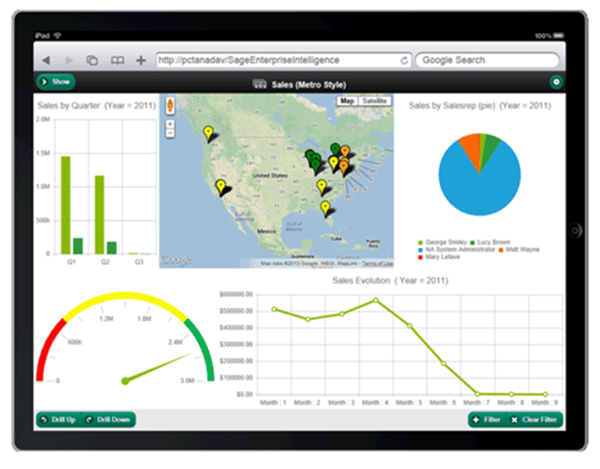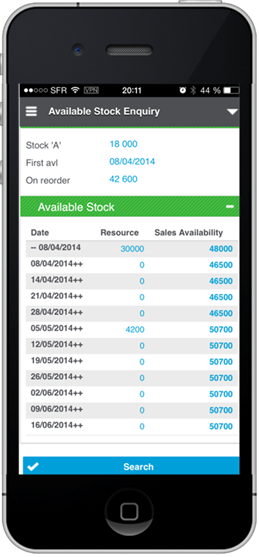I recently read this blog from a Sage 500 user comparing Sage X3 versus Acumatica – or more accurately, the entire Sage product portfolio versus Acumatica.
I respectfully disagree with many of the points made in the article simply because the author conveniently blurred comparisons across various Sage product lines. By lumping Sage X3 together with other products, he makes a selective comparison between Acumatica and some of the older applications in the Sage product portfolio.
So in this article, I’ll examine a few of the arguments that were made and perhaps shed light on things that were conveniently skewed.
It’s worth noting, though, that Sage X3 and Acumatica serve different spectrums of the midmarket; Sage X3 concentrating on the upper midmarket while Acumatica focuses on the lower midmarket.
1. Publisher Viability
It’s a fact that Sage is the world’s 3rd largest software publisher for enterprises only behind SAP and Oracle if you dissect the market by customer base. If you choose to assess the market by revenue, Sage is recognized as the world’s 3rd or 4th largest enterprise solution provider depending on the reporting source. With over 6M customers worldwide and 13k channel partners, Sage is the undisputed leader of software in the SMB space.
Acumatica, while established in 2008, is still essentially in start-up mode, building on a solid start with a strong desire to replicate the success of the Sage channel. Many companies in the same mold as Acumatica are struggling to generate repetitive, sustainable profits period after period.
Why is this important? If you read my earlier blog about the 3Ps, you want to select a publisher with staying power - a publisher that is profitable, reinvesting in its portfolio, and dedicated to the market. For over 30 years, Sage has been committed to the SMB market and reemphasized that commitment at Sage Summit.
2. Marketing: What’s in a Name?
It’s hard to argue with Tim’s point about Sage rebranding its portfolio. But the underlying products and channel ecosystem haven’t changed with each product renaming. In my opinion, the rebranding has only hurt Sage’s brand awareness in North America. But, it’s hard to knock Sage for investing in marketing. How many companies do you know can maintain new customer growth year-after-year, even during tough economies, without investing in marketing and new customer acquisition?
3. Mobility
Sage X3 delivers true mobility by providing customers with technology to work anywhere, from any device and browser. This is delivered through web-based forms that leverage native Windows technologies and architecture that have been in the market for several years now.
Mobility is native with Sage X3 and is not a separate add-on application as suggested in the article. This is one area (of many) where the author conveniently blurs the lines between Sage X3 and the rest of the Sage product portfolio. While it’s true that for SOME Sage products, mobile functionality is a separate add-on application. But in Sage X3, mobility is native and built into the core product itself.
4. Integration Options and ‘Freedom of Choice’
Both Sage and Acumatica rely on third party solutions to complement and extend functionality of the core product. While Sage provides some of these enhancements in-house, Sage X3 also delivers Web Services capabilities for integration to just about any external application. In this way, Sage provides customers ‘freedom of choice’ rather than a ‘one-size fits all’ approach.
It’s worth noting that Sage X3 delivers out-of-box functionality for manufacturers, both discrete and process. Acumatica relies on a third-party relationship to deliver this critical functionality to its customers.
 Sage X3 Mobile on iPad
Sage X3 Mobile on iPad
5. In the Cloud, On-Premises, Or Both (Hybrid)
Deployment options are a huge differentiator within the Sage portfolio. Sage provides customers ‘freedom of choice’ throughout its portfolio rather than a ‘one-size fits all’ approach because functional requirements, technical capabilities, business processes, and budget differ greatly from a start-up organization to a 100M company.
Sage X3 provides customers with a choice of on-premises, Hosted, our true Cloud deployment. The product is the same regardless: same technology, same user interface, and same customer experience because of how it was built using web-enabled tools.
Simply put, not everyone wants to run their business software in the cloud.
For some companies, the cloud is a great fit while other companies prefer the flexibility and control of running software on-premises. And yet a third category that’s growing in popularity is a hybrid approach – some applications run in the cloud (CRM, Payment Processing) while connected/integrated with more mission critical applications (accounting & operations) that remain on-premises. Sage X3 provides for all 3 of those options.
Conclusion
Stephen Kelly, CEO of Sage Group, was the first to admit that Sage isn’t perfect and there is still plenty of work to reinforce Sage’s commitment to the small and mid-sized business (SMB) market. But, Sage provides customers ‘freedom of choice’ throughout its portfolio rather than a ‘one-size fits all’ approach and it’s hard to argue with the logic of this decision.
Each Sage product, on its own individual merit, has more market share and brand awareness than Acumatica currently has. It’s no wonder Sage is the envy of other software publishers and the target of unfair criticism at times.
Nobody knows how this story will end – but at RKL eSolutions, we’re completely committed to Sage and the portfolio of software products we represent and support. And, we’re excited about our future with Sage as a publisher and business partner.




